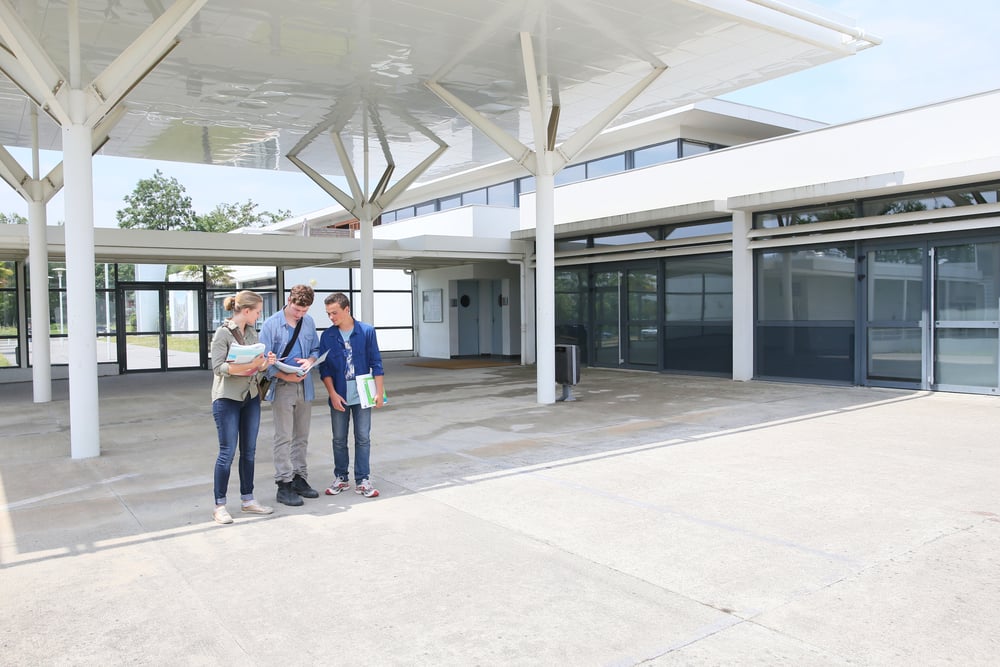Addressing the Attainment Gap: Strategies to Reduce Inequalities in Education
The education sector has a critical role to play in reducing inequalities in society. Research shows that inequalities between children from different socioeconomic groups, in both cognitive skills and socio-emotional wellbeing, are already visible from the age of 3 and that they persist and widen over time. School closures during the pandemic have disproportionately impacted poorer students.
In this article, we discuss the attainment gap, how it is measured, and consider how it varies across different school settings. We also explore some possible measures schools can take to address it.
What is the definition of attainment in education?
According the OECD: 'Educational attainment refers to the highest level of education completed by a person, shown as a percentage of all persons in that age group.'
What is the attainment gap?
Action Tutoring report that only 50% of pupils leave school achieving a grade 5 or above in their English and maths GCSEs. For pupils from disadvantaged backgrounds, only 25% achieve this benchmark. Similarly, upon leaving primary school, just over half (51%) of pupils from low-income backgrounds meet expected grades in reading, writing and maths. This is called the attainment gap.
How is the attainment gap measured?
The gap between disadvantaged pupils and their peers at key stage 2 (primary) and key stage 4 (secondary) is a key measure the Department of Education (DfE) uses to judge its performance.
Measures of attainment gaps at both primary and secondary have historically been based upon comparing the proportions of pupils in each group achieving an expected standard - particularly level 4 in reading, writing and maths at the end of key stage 2, and 5 good passes including English and maths at GCSE.
How does attainment differ in different school settings?
There are lots of factors affecting attainment in schools. Issues with housing, nutrition, transport, and clothing affect access to education and impact a pupil’s capacity to learn. The cost of materials, uniforms, school trips, and additional extras further entrench inequalities, as well as access to the internet and computer devices.
Differing levels of funding for schools also means that pupils from deprived areas may experience schooling that is not as well-resourced, and with less experienced teachers.
Class sizes, how children are streamed and teachers’ choices on how to lead classes also have an impact on learning. Even the other pupils within a classroom can impact attainment.
Research by The Education Policy Institute shows that persistently disadvantaged pupils end primary school over a year behind their non-disadvantaged peers and are over two years behind by the end of secondary school, and that the gap becomes more prominent in rural areas by the end of secondary school.
Educational attainment, even at primary school, has an impact on life chances. According to Centre for Cities, there’s only a 1 in 15 chance that these pupils will go on to achieve five good GCSEs, including English and maths (2 in a classroom of 30) and there’s a much higher chance they will end up NEET (not in Education, Employment or Training).
What contributes to the attainment gap?
Poverty is a considerable factor contributing to the attainment gap. A recent study by the Education Policy Institute has found the gap between poor pupils and their wealthier classmates in England has stopped narrowing and gone into reverse for the first time in 12 years.
Furthermore, the study highlights growing inequalities between ethnic groups. Black Caribbean pupils sitting GCSEs in 2019, for example, were 10.9 months behind white British children in maths and English.
Geographical location also plays its part. Research shows that 70% of the local authorities with the fewest schools rated as “Good’ or ‘Outstanding’ are in the north of England and 75% of schools rated ‘inadequate’ for behaviour are in the north and the midlands.
Professor Sonia Blandford, one of the country’s foremost experts on social mobility, believes there should be a greater focus on reducing the number of children and young people being excluded and closing the gap for SEND pupils, who she says are “too often the marginalised and forgotten group”. She recommends an in-depth review of narrowing the attainment gap for SEND pupils.
Meanwhile, Lindsay Paterson, professor of education policy at Edinburgh University, told The Sunday Times last year: “We know from research that most of the inequality in children’s progression at school happens during the summer holiday when they are not attending classes.” Fears are now growing about impact on disadvantaged children from the move to home schooling during lockdowns.
What can I do to help close the attainment gap in my school?
There are no shortcuts to reducing the attainment gap and in light of Covid-19, schools are facing a myriad of additional challenges. Here are some of the measures schools can consider to help underperforming pupils succeed.
1. Recognise that It is a complex problem to solve
Daniel Sobel, CEO of Inclusion Expert, has carried out research in over 800 schools across the education system. He says, “the solution to narrowing the gap has to involve outstanding, quality-first teaching based on understanding students’ needs and personalising approaches.”
2. Identify the why
Sobel recommends that staff are trained to identify the reasons behind problems and that interventions are based on communication with individual students. Schools must collate and use their own data to identify trends in disadvantaged pupil performance and use this data to develop strategies.
For example, research shows that how often parents read to their children and the attendance of centre-based childcare play a role in explaining the attainment gap. A learning environment at home and a calm atmosphere were factors enabling socioeconomic disadvantaged children to achieve above average results despite their circumstances.
3. Understand the barriers to learning
Following school closures as a result of a Covid-19, the Education Endowment Foundation launched an online tuition pilot to help support disadvantaged children. Evaluation of the pilot uncovers promising results. The tool was found effective in helping disadvantaged pupils
Access to equipment and reliable internet connections were seen as key barriers to participation and almost half of schools participating in the study (48%) reported lack of equipment as a challenge.
Attendance is another key barrier to learning outcomes. Schools must closely examine the factors which are affecting attendance and address them, whether that involves establishing uniform closets, improving access to health care, launching walking school buses, providing extra tutoring, offering mentoring, or developing morning or afterschool care.
4. Use funding effectively
Effective use of the Pupil Premium grant is critical. A focus on mental health and wellbeing and cultivating resilience in the era of Covid-19 is essential. Revisions to the way Pupil Premium is to be reported for 2020 - 2021 means schools will now need to demonstrate how their spending decisions are informed by research evidence.
Resources are increasingly squeezed as many more children fall into the disadvantaged bracket but do not qualify for the pupil premium or pupil premium plus funding. There is, however, additional financial help in the from of the government’s £1 billion catch-up funding, split between the £350 million National Tutoring Programme, and £650 million for direct use by schools.
5. Focus on teaching and learning support
Nigel Bishop, National Education Trainer and Consultant, says quality of teaching and the effectiveness of learning support are the two most important factors influencing the education children and young people receive.
For disadvantaged pupils, having teaching assistants and other support staff to lean on, for their academic and social and emotional needs, is of crucial importance.
Incentives are needed to recruit and retain highly motivated teachers in schools located in more deprived communities.
6. Take a long-term, holistic approach
An Understanding Inequalities project in Scotland concluded: “We, as a society, need to encourage a system that commits to a long-term, holistic approach to policies across health, childcare, social services, welfare, and employment, all focused on children’s wellbeing at different development stages.”




